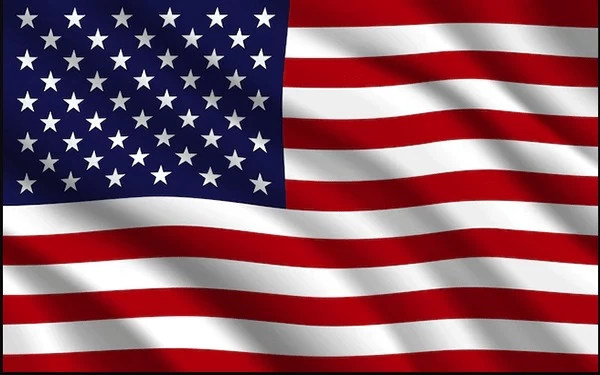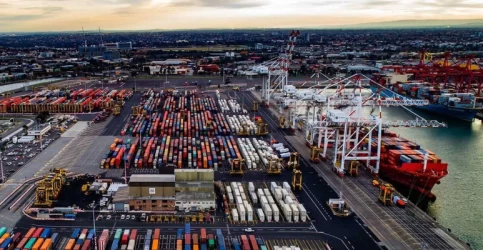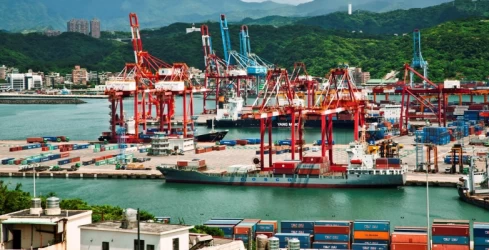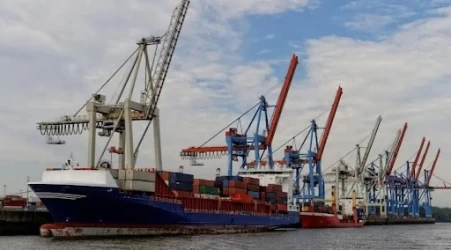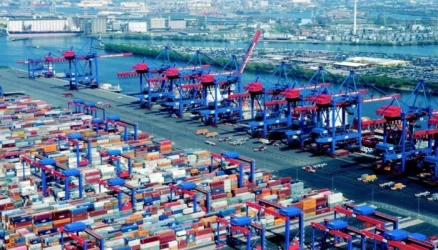Guide to Trade with USA, Sea Shipping
The United States is one of the most significant trading partners globally due to its vast economy and diverse market. For businesses seeking to expand internationally, trading with the U.S. offers substantial opportunities. Maritime transport plays a pivotal role in the import and export processes between the U.S. and other countries, handling the bulk of goods exchanged between regions. This guide provides an overview of how to trade effectively with the U.S. and explores the essential aspects of maritime transportation.
Key Economic Sectors and Opportunities
When trading with the U.S., it is important to identify key sectors that present the most lucrative opportunities. These sectors include:
- Technology: The U.S. is home to the largest tech companies in the world. Demand for high-quality technological components and devices is significant, both in consumer electronics and industrial tech.
- Agriculture: The U.S. has a robust agricultural sector, producing wheat, corn, soybeans, and other crops for global markets. Importing or exporting agricultural products to and from the U.S. requires understanding market regulations and seasonal demands.
- Pharmaceuticals and Healthcare: The U.S. healthcare industry is one of the largest in the world, offering opportunities for pharmaceutical products, medical devices, and healthcare services.
- Energy: Oil, natural gas, and renewable energy sectors are vital components of U.S. trade. Companies dealing with energy products or technologies can tap into a vast market through U.S. trade.
- Automotive Industry: The U.S. is one of the largest markets for automotive sales and manufacturing. Importers and exporters in this field can benefit from the U.S.'s significant demand for both vehicles and auto parts.
Understanding U.S. Trade Regulations
Before engaging in trade with the U.S., understanding federal and state regulations is essential. The U.S. Customs and Border Protection (CBP) plays a crucial role in controlling imports and exports. Traders must comply with regulations related to tariffs, quotas, product labeling, and safety standards.
Key regulatory considerations include:
- Tariffs and Duties: Many goods imported into the U.S. are subject to tariffs and duties, depending on the product category and country of origin.
- Free Trade Agreements (FTAs): The U.S. has FTAs with several countries, which can reduce or eliminate tariffs on certain goods. Key agreements include NAFTA (revised as USMCA), agreements with South Korea, and others.
- Product Standards: Imported goods must meet U.S. standards in terms of safety, environmental regulations, and health codes, especially for food, pharmaceuticals, and automotive products.
- Intellectual Property Rights (IPR): The U.S. enforces strict intellectual property laws to protect patents, trademarks, and copyrights. This is crucial for businesses exporting technology, media, or branded products to the U.S.
Maritime Transport in U.S. Trade
Maritime transport remains the most efficient and cost-effective method for international trade with the U.S. The country’s vast coastline and numerous major ports make it a hub for global shipping routes. Key ports in the U.S. include:
- Port of Los Angeles (California) – The largest port in the U.S., crucial for Pacific trade routes.
- Port of New York and New Jersey – Serving the East Coast, this is a major entry point for goods from Europe and Africa.
- Port of Houston (Texas) – A key port for oil and energy product shipments.
- Port of Savannah (Georgia) – Known for handling containerized cargo from Asia.
Types of Goods Shipped via Maritime Transport
Common types of goods that are shipped by sea to and from the U.S. include:
- Containers: Standard shipping containers are used for transporting manufactured goods, electronics, textiles, and food products.
- Bulk Commodities: This includes grains, coal, oil, and minerals shipped in large quantities.
- Automobiles: Both new and used vehicles are often shipped via roll-on/roll-off vessels.
Choosing the Right Maritime Transport Option
Several factors influence the choice of maritime transport options when trading with the U.S.:
- Shipping Method: Container shipping is the most common method, with options for full container loads (FCL) or less than container loads (LCL) depending on the size of the shipment.
- Transit Time: The location of the U.S. trading partner’s country affects shipping times. For example, shipments from Asia typically take 14 to 30 days, while European shipments may take between 7 and 14 days, depending on the port.
- Cost: Maritime shipping costs are influenced by fuel prices, port fees, and the size of the shipment. It’s important to account for insurance and the possibility of delays when calculating overall costs.
- Freight Forwarders and Shipping Companies: Partnering with a reputable freight forwarder or shipping company is essential. They can help manage documentation, customs clearance, and ensure timely delivery of goods.
Challenges in U.S. Maritime Trade
While maritime transport is an efficient way to trade with the U.S., there are several challenges to consider:
- Port Congestion: Major U.S. ports often face congestion, leading to delays in unloading cargo and increasing wait times for vessels.
- Environmental Regulations: The U.S. is increasingly implementing stricter environmental regulations for shipping, especially regarding emissions from vessels and port operations.
- Security Measures: Post-9/11, the U.S. has heightened its maritime security protocols, including advanced cargo screening and inspection requirements, which can slow down the process of clearing goods.
Conclusion
Trading with the U.S. via maritime transport offers vast opportunities for businesses across various sectors. By understanding the economic landscape, regulatory requirements, and navigating the complexities of maritime shipping, companies can tap into one of the most dynamic and expansive markets in the world. With proper planning and the right partnerships, international traders can successfully and profitably engage in trade with the United States.
If you have any specific questions or need further assistance, feel free to ask!

